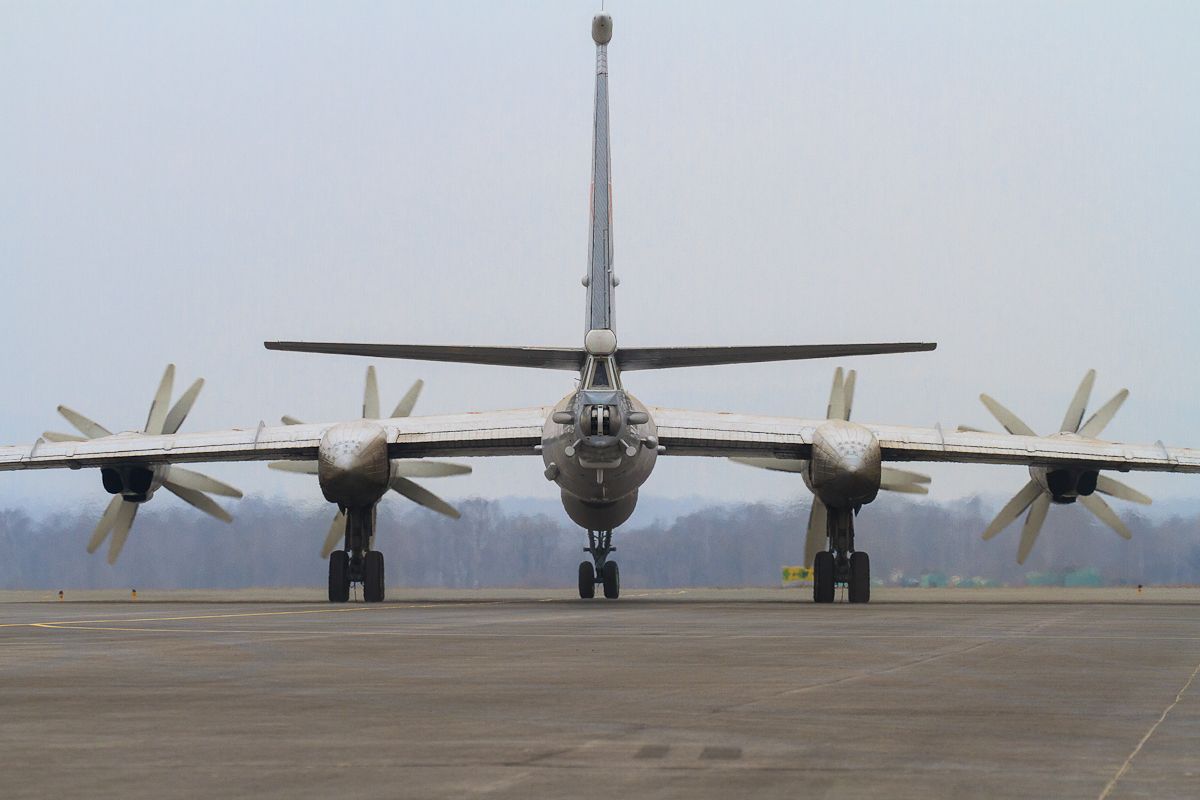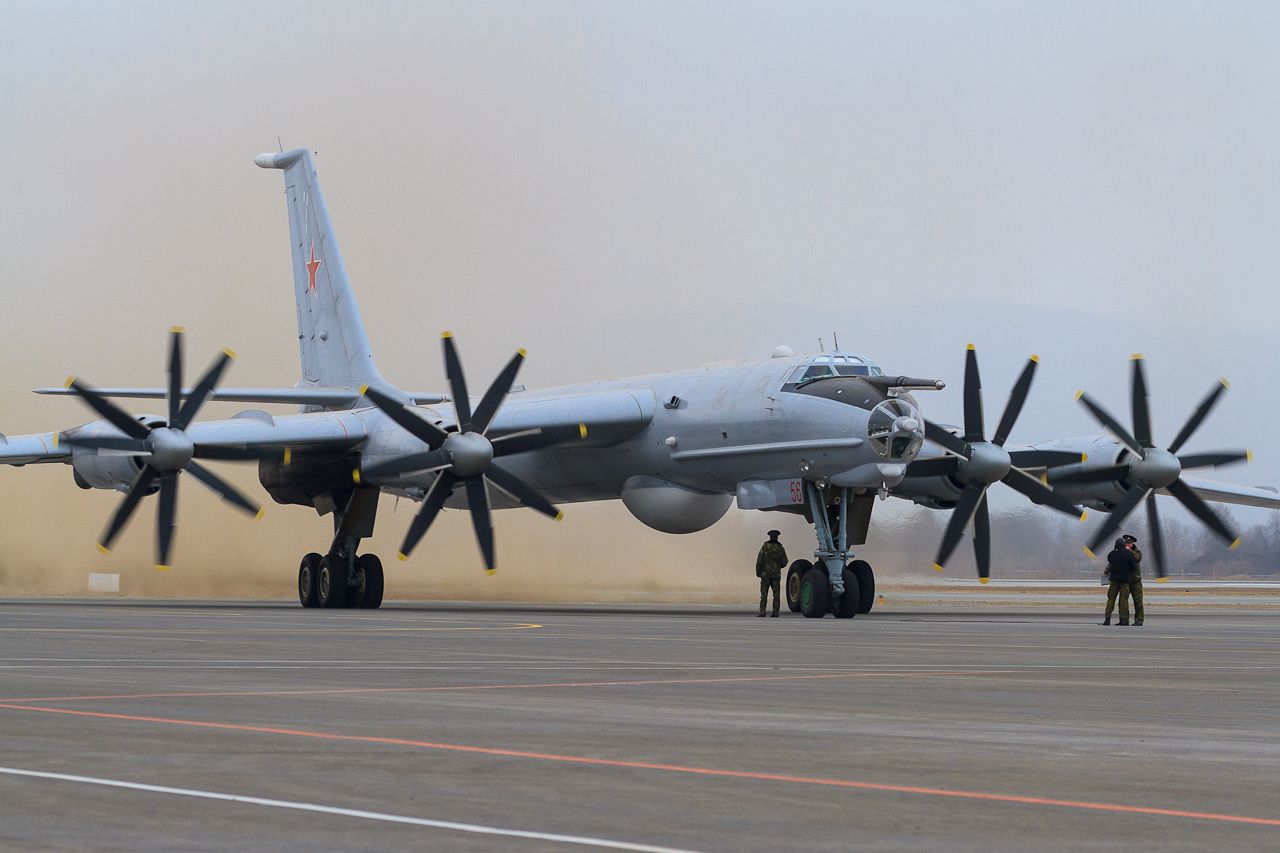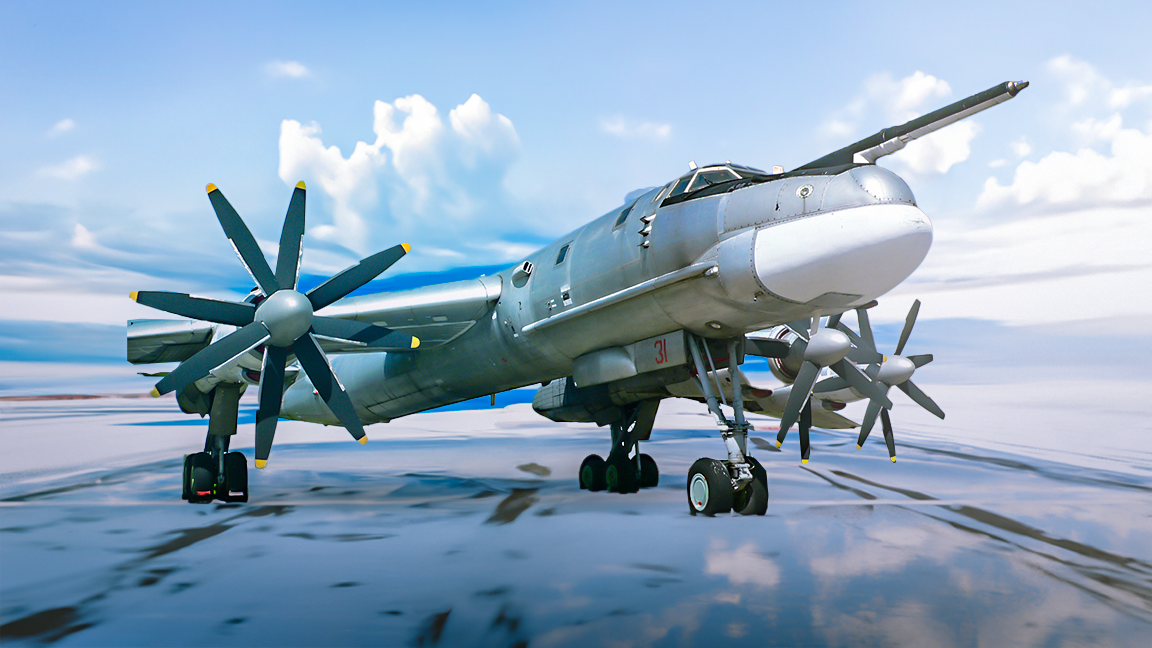In the realm of military aviation, certain aircraft achieve legendary status, not just for their performance but for their longevity and iconic design. For the United States, the B-52 Stratofortress has held this title for decades. However, on the other side of the world, Russia has its own formidable counterpart: the Tupolev Tu-95. Known as the “Bear” by NATO, the Tu-95 remains one of the most distinctive and enduring strategic bombers in aviation history.

The Birth of a Legend
The Tupolev Tu-95 first took to the skies in 1952, during the height of the Cold War. Designed by the renowned Soviet engineer Andrei Tupolev, the Tu-95 was created to meet the Soviet Union’s need for a long-range strategic bomber capable of delivering nuclear payloads deep into enemy territory. The aircraft’s development was driven by the same geopolitical tensions that led to the creation of the B-52, resulting in two of the most iconic bombers of the era.
What sets the Tu-95 apart from its American counterpart is its unique propulsion system. Unlike the B-52, which is powered by jet engines, the Tu-95 is driven by four Kuznetsov NK-12 turboprop engines. These engines, each equipped with massive contra-rotating propellers, give the Tu-95 its unmistakable appearance and sound—often described as a low, menacing drone. The choice of turboprops was intentional, allowing the Tu-95 to achieve remarkable fuel efficiency and extended range, essential for long-duration missions.
Capabilities and Role in the Cold War
The Tu-95 was designed to carry out a variety of roles, including strategic bombing, reconnaissance, and anti-submarine warfare. Its primary mission, however, was to serve as a nuclear deterrent. With a range of over 9,000 miles, the Tu-95 could strike targets across the globe without needing to refuel, making it a critical component of the Soviet Union’s nuclear triad.
Throughout the Cold War, the Tu-95 was a symbol of Soviet military power, frequently conducting patrols near NATO airspace and participating in exercises that demonstrated its long-range strike capabilities. The aircraft’s presence was a constant reminder of the Soviet Union’s ability to project power far beyond its borders, and it played a key role in maintaining the balance of terror that defined the era.

Evolution and Modernization
Despite its age, the Tu-95 has undergone numerous upgrades over the decades, allowing it to remain a relevant and formidable platform in the 21st century. Modern variants, such as the Tu-95MS, have been equipped with advanced avionics, upgraded engines, and the capability to carry modern cruise missiles, including the Kh-101 and Kh-102, which can be armed with conventional or nuclear warheads.
The Tu-95’s endurance and adaptability have ensured its continued service in the Russian Air Force. It remains a key component of Russia’s strategic bomber fleet, participating in long-range patrols, military exercises, and even combat missions in recent conflicts. The aircraft’s ability to carry a diverse array of weapons, including precision-guided munitions, has expanded its role beyond that of a traditional strategic bomber, allowing it to perform in a variety of combat scenarios.

The Future of the Bear
As the Tu-95 approaches its seventh decade of service, questions arise about its future. Russia has announced plans to develop a new generation of strategic bombers, including the stealthy PAK DA, which is expected to eventually replace the Tu-95. However, given the Tu-95’s proven track record and the extensive modernization efforts it has undergone, it is likely that the Bear will remain in service for years to come.
The Tupolev Tu-95 is more than just an aircraft; it is a symbol of Russian engineering and military prowess. Its distinctive design, remarkable longevity, and role in global geopolitics have cemented its place in aviation history. As it continues to patrol the skies, the Tu-95 stands as a testament to the enduring legacy of one of the most iconic aircraft ever built, a true competitor to the B-52 and a symbol of an era defined by superpower rivalry.





